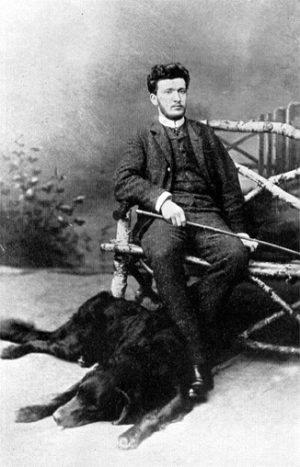
It was an awkward moment. Though he would eventually become a respected German music critic and composer, Ferdinand Pfohl was a humble music student at the time of his faux pas, but he could hardly be blamed for confronting the person he thought had stolen “Lesko,” a very distinctive Newfoundland that belonged to fellow student, Ferruccio Busoni.
The stranger with Lesko was so poorly dressed as to be shabby. Indeed, he could have been a beggar on the street when Pfohl saw him. Pfohl accosted the man with every intention of taking Lesko back, but was startled to see that the “street person” was Busoni himself. The year was 1886, and Busoni, too poor to take a proper vacation, was taking a “staycation,” instead. He had dressed as a laborer to avoid his friends.
Busoni had a lively and engaging personality, and his musical performances at bars and cafes soon attracted a group of artists. Since Lesko was always with his master, the artists declared Lesko to be an honorary member of their gatherings, and dubbed themselves, “Leskovites.” In honor of the friends who had so honored his dog, Busoni composed the Geharnischte suite, op. 34a, each movement dedicated to one of “the four friends of Lesko in Helsinki:”
People interested in the arts will recognize the names of composer, Jean Sibelius, writer Adolf Paul, conductor Armas Järnefelt, and his brother, the painter Eero Järnefelt, Leskovites all. As for Busoni, he went on to have a storied career writing orchestral works and piano solos, transcribing and arranging the works of other composers, and writing the highly-regarded Ästhetik der Tonkunst (1907; Sketch of a New Esthetic of Music).
Image of Lesko and Ferruccio Busoni
